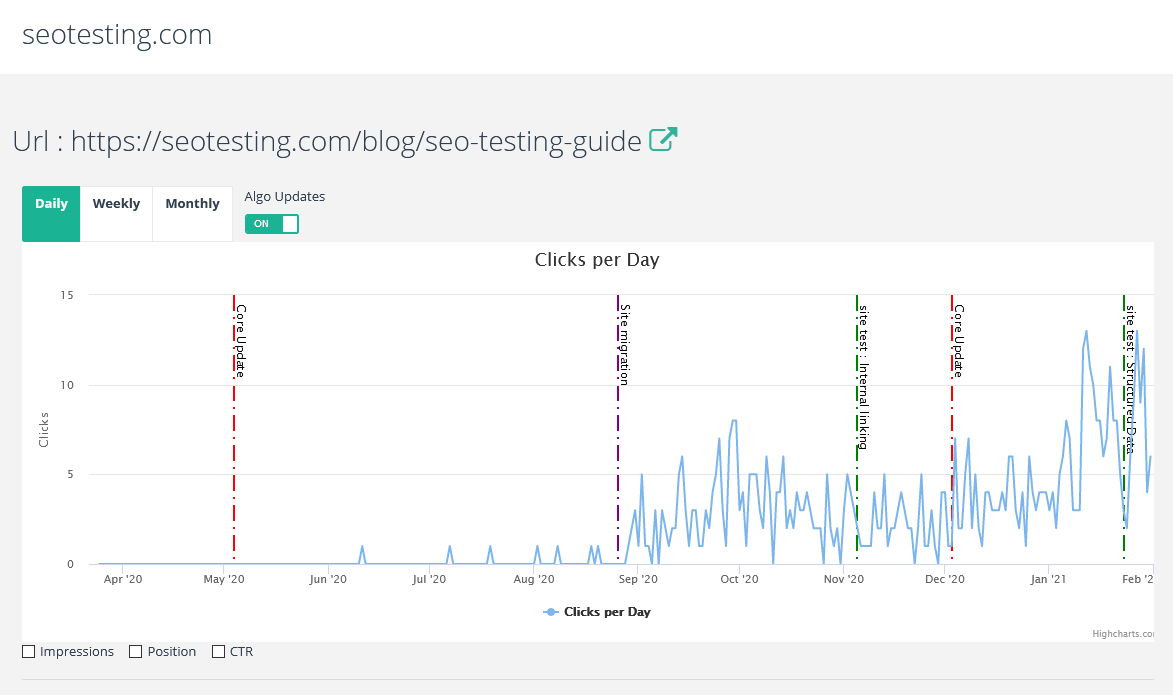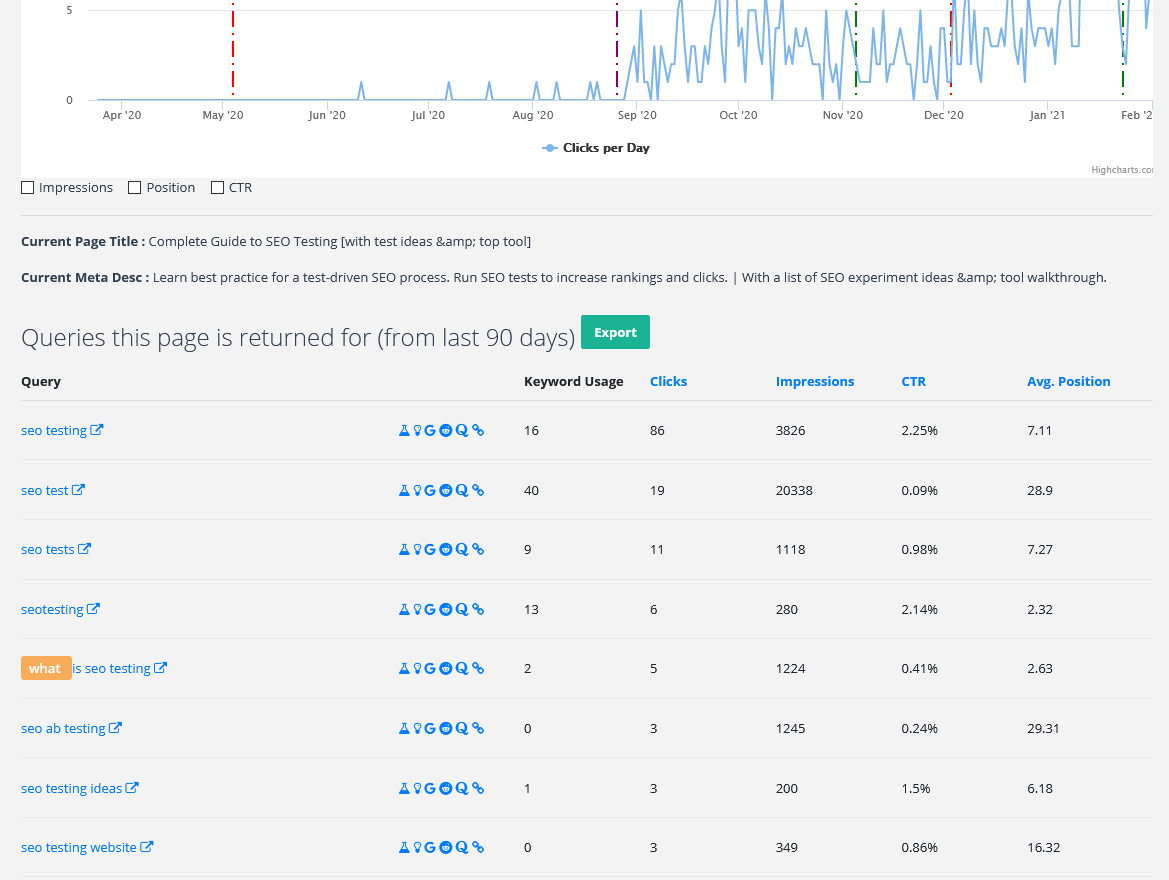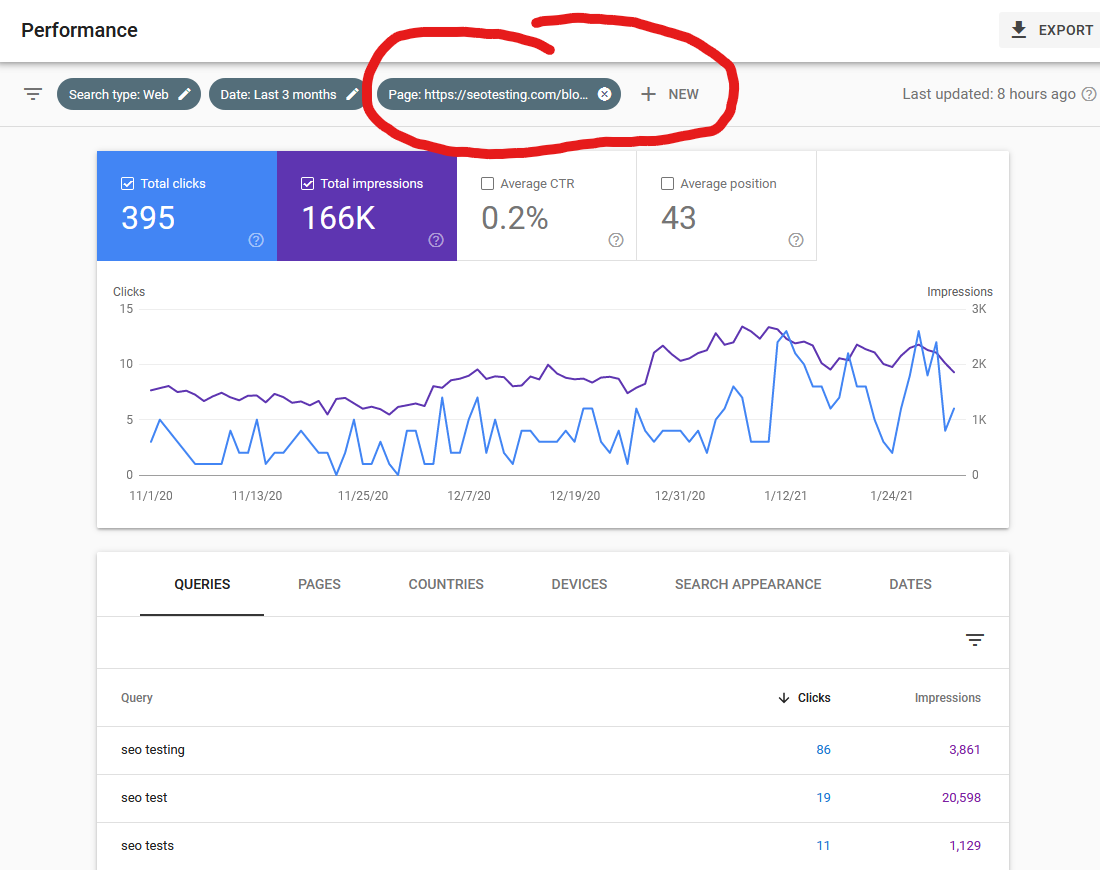Researching what search queries a page ranks for is an important process of improving and refreshing content that is published on a website.
Google Search Console data is the best source for this process as it gives you accurate search volumes, rather than estimated search volumes that a lot of other SEO tools use.
We’ve seen so many instances of tools estimating a query as having 0-10 monthly searches, where Search Console correctly reports it as having many 1,000’s.
As SEOTesting uses data directly from Google Search Console via the API - you know you’ll be seeing accurate search volume data when researching queries.
How to see what search queries your page ranks for in SEOTesting?
In SEOTesting, we have the reports section which has loads of really actionable reports which can help you:
- Get new content ideas
- Find pages to improve
- Find click through rate optimization opportunities
- And many more.
Whenever you are looking at the data in a report, and you see a url - you can click on it and you will be taken to the PageDetails view for that url.

Digging into the data for an individual page/url of a site.
On this page you can see clicks, impressions, average position, and click through rate on a daily, weekly or monthly basis for this individual url. [impressions, average position, and ctr graphs are hidden by default. Click the relevant checkbox to display them]
Below the graphs, you’ll find the current page title and meta description.

All the queries your page is appearing for in Google.
Next you’ll see a data table of all the queries the page has appeared in the organic search results for over the past 90 days. SEOTesting also does a simple scraping request so we can get the contents of the page and count the number of times each query is used on the page. (this is also how SEOTesting retrieves the page title and meta description).
What to do with this query information?
You can now go through the list of queries. I certainly do not recommend keyword stuffing all of these terms into your content - this is a practice that worked back in the 1990’s and the days of Alta Vista search engine but is going to get your content penalised these days! But from this list of queries I am sure you can find:
- High impression keywords to include in the page title or meta description (click through rate optimization)
- High impression keywords that are missing from the page's content
- Variations of a term to use
- Queries that can inspire the addition of a new section to the page
- Questions based queries to base FAQ sections on
To help find useful queries, search highlighting will highlight informational, commercial and transactional keywords yellow, red and green respectively. These particular types of queries can indicate search intent and are particularly useful in certain content scenarios.
How to use Google Search Console to see what queries your page ranks for?
If you aren’t a SEOTesting customer (there’s a free trial so you should at least try it out!), you can still get at the queries a page is appearing in Google for. You won’t be able to see which queries are in current use on the page - but it can still be useful.
To see this information - go to Google Search Console, and open the Performance reports section.
From the top filter section, add a new filter for a Page.

You’ll now be able to see just the queries for that page.
Search console limits you to the top 1,000 queries to view or export - but for looking at it with a Page filter applied this enough data to work with.

